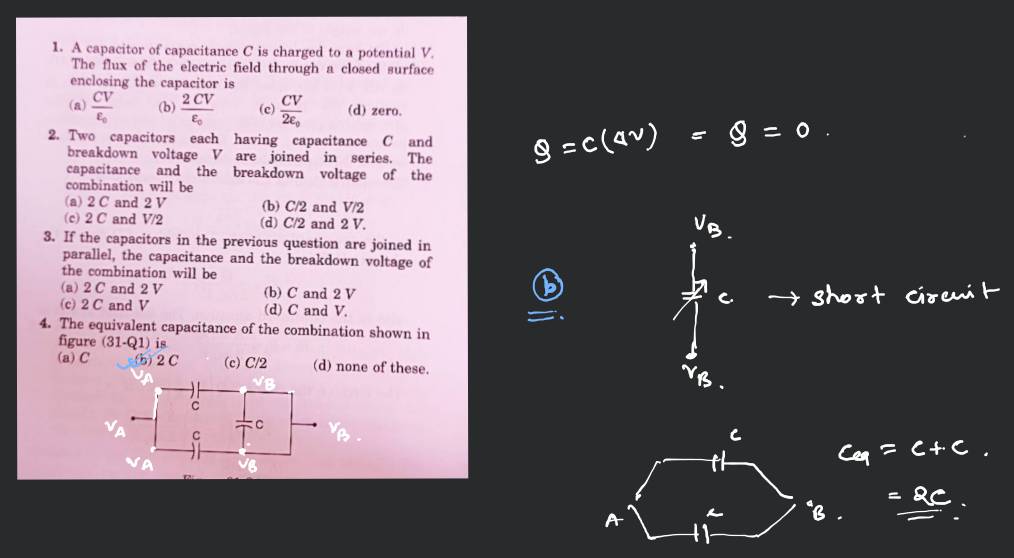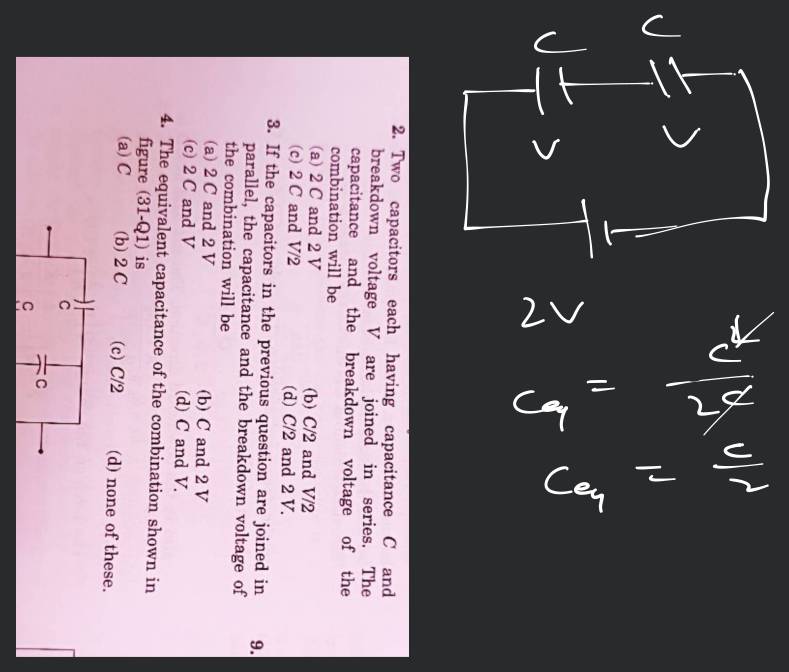Question
Easy
Solving time: 2 mins
Two capacitors each having capacitance C and breakdown voltage V are joined in series. The capacitance and the breakdown voltage of the combination will be:
 Text solution
Text solution Verified
Verified
Since the voltage gets added up when the capacitors are connected in series, the voltage of the combination is . Also, the capacitance of a series combination is given by
Was this solution helpful?
48
Share
Report
Video solutions (11)
Learn from their 1-to-1 discussion with Filo tutors.
26 mins
Uploaded on: 6/16/2023
Was this solution helpful?
136
Share
Report
2 mins
Uploaded on: 12/30/2022
Was this solution helpful?
103
Share
Report
Found 4 tutors discussing this question
Discuss this question LIVE
5 mins ago

One destination to cover all your homework and assignment needs
Learn Practice Revision Succeed

Instant 1:1 help, 24x7
60, 000+ Expert tutors

Textbook solutions
Big idea maths, McGraw-Hill Education etc

Essay review
Get expert feedback on your essay

Schedule classes
High dosage tutoring from Dedicated 3 experts
Practice questions from Concepts of Physics (HC Verma Part II)
Question 1
Medium
Views: 5,838
Question 3
Easy
Views: 5,530
Question 4
Hard
Views: 5,881
Practice more questions from Electrostatic Potential and Capacitance
Question 1
Hard
Views: 5,594
Question 2
Easy
Views: 5,785
Question 3
Hard
Views: 6,812
(c) How much energy is needed to double the distance between its plates?
[(a) ; (b) ; (c)
Practice questions on similar concepts asked by Filo students
Question 1
Views: 5,535
Question 2
Views: 5,159
Question 3
Views: 5,238


Stuck on the question or explanation?
Connect with our Physics tutors online and get step by step solution of this question.
231 students are taking LIVE classes
| Question Text | Two capacitors each having capacitance C and breakdown voltage V are joined in series. The capacitance and the breakdown voltage of the combination will be: |
| Updated On | Jun 25, 2023 |
| Topic | Electrostatic Potential and Capacitance |
| Subject | Physics |
| Class | Class 12 |
| Answer Type | Text solution:1 Video solution: 11 |
| Upvotes | 1269 |
| Avg. Video Duration | 6 min |




